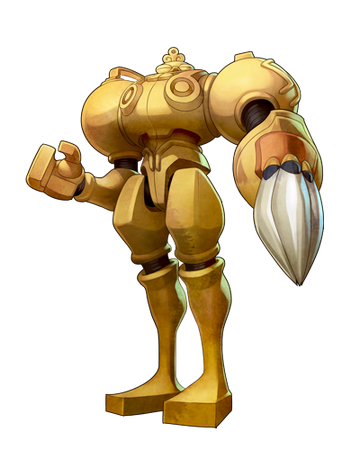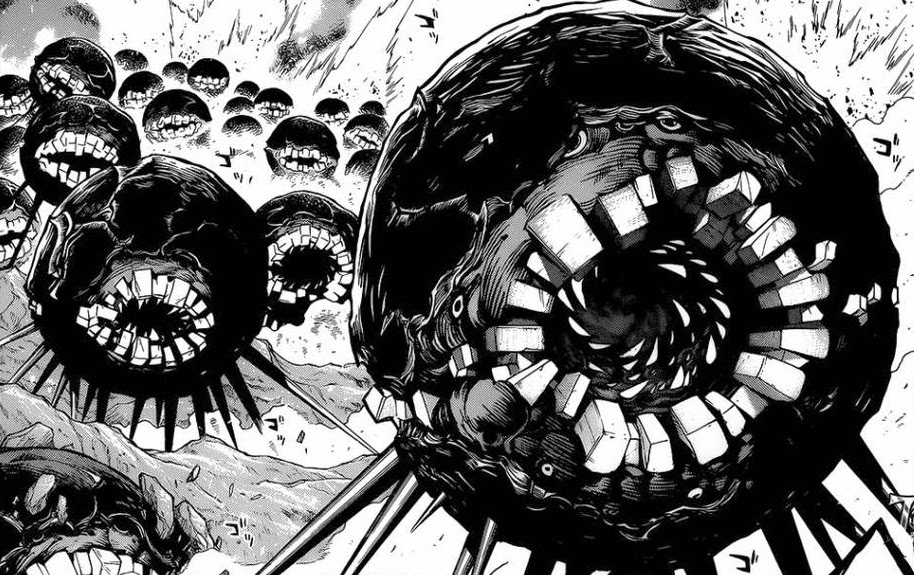This is my second post outlining my idea for the Funnel Jam. First post here. I have fallen way behind on this, but fortunately, the deadline has been extended.
I'll put the full text (of what I currently have) below, but tl;dr compared to the first version, I now have a completely different resolution mechanic based on dice pools and how to spend a limited number of successes across tasks, and I've also stripped-down the superheroes themselves pretty significantly.
Premise
The Superhero Funnel is inspired by the My Hero Academia Entrance Exam. The players each control some number of prospective superheroes who must go through a series of trials (Issues) to be accepted into the superhero school. Players will variously play their superheroes altogether as teams, play each superhero individually, or split their superheroes across teams with the other players. The goal is for superheroes to “survive” Issue by Issue and earn a sufficient number of Hero Points.
Ability Scores
Abilities are more about an approach or style than physicality or other specific abilities. Sure, there are certain things one superhero may be able to do that another simply cannot, given the differences in their powers, but it is generally assumed that, even as students, all of these prospective superheroes are capable of completing challenges, and they are being challenged not just on their raw power, but on their individual aptitudes and character.
Roll 1d6 for each Ability
SHOWmanship: Power displays, catchphrases, signature taunts, or moves.
TEAMwork: Inspiration, self-sacrifice, prosocial behaviors, public safety.
WILLpower: Endurance, resistances, overcoming limitations, facing fears.
TECHnique: Infiltration, ingenuity, trained skills.
EXAMination: Investigation, surveillance, planning.
Hero Points
The starting Hero Points (HP) are 10 for all superheroes. HP are awarded throughout the tournament such as for completing Issues. If a superhero falls to 0 or negative HP, they are eliminated from the Entrance Exam even if they are not defeated or outright fail an Issue.
Issues
The Entrance Exam consists of a series of trials such as obstacle course races, hostage rescue, facing supervillains, and investigations. One could think of each trial as an Issue of a comic book. Some Issues are team-oriented, while others are solo or free-for-all. Superheroes are awarded HP for completing Issues and may gain bonus HP by completing certain sub-tasks or be penalized HP for failing to meet certain conditions.
Action Strip
Issues and other superhero challenges consist of Action Strips, where single actions are Panels on the Strip. For a given Action Strip, roll as many d6’s as the decided Ability Score and an additional 2d6. Rolling 4 or higher on a die counts as a success. Each Panel costs a certain number of successes in order to be completed.
At the start of an Action Strip, the GM will lay out the Panels on the Page; explaining what each Panel entails and the base cost in successes for each Panel. Additionally, players may be able to suggest Panels of their own and the GM will determine the cost. These costs may fluctuate Page by Page, and additionally, the GM may spring Surprise Panels on superheroes as a result of their actions.
A Page consists of the Panels for all superheroes on a given side of a conflict (if there are multiple sides), and all Panels resolve in parallel. Meanwhile, available Panels, Surprise Panels, and costs are re-evaluated on the next Page.
By spending half the cost (rounding up), a superhero can create a Danger Panel. They roll 2d6, and on a full success (both dice >= 4) it is as if they paid full price, but on a partial success (only one die >= 4), they may suffer consequences such as increased costs of Panels on the next Page, fewer available Panels, fail the Panel but without increasing costs or losing Panels or succeed but evoke a Surprise Panel. On a full failure (both dice <= 4), consequences are even graver, such as failing the task and increasing costs, losing Panels, or evoking a Surprise Panel.
Example
For this Issue, a group of bank robbers have taken hostages, planted a bomb, and are preparing to make their escape with the money. This Issue is a Three-Panel Action Strip where each Panel on the first Page costs 1 success, and the Issue is worth up to 5 HP. Bloodhound has 5 TECH but knows that she’s being tested specifically for her ability to keep the hostages safe and inspire confidence and that she will receive +3 HP if she can complete the Issue using TEAM, so she chooses to use her 3 TEAM instead.
She rolls 5d6 (3 TEAM + 2 default) and gets 4, 6, 1, 2, and 5, meaning she gets 3 successes. While this is technically enough to succeed on all Panels, she suspects that if she rescues the hostages or defuses the bomb, Meanwhile the robbers will have more time to make their escape, increasing the cost of that Panel on the next Page. She also suspects the reverse to be true- if she goes after the Robbers, Meanwhile the bomb will keep ticking and hostages will have less time to escape, increasing the cost of those Panels on the next Page. When the player asks, the GM confirms this is so, but would have kept it a secret if the player hadn’t asked, because they prefer the style of play that encourages player ingenuity, as was discussed in their session 0. She also suspects that if she does not rescue the hostages on the first page, then she will not receive the bonus HP (this is also confirmed by the GM).
Given these circumstances, she chooses the hostage rescue as her Panel for the first Page. She spends 1 success and, using her proportional strength and speed of a bloodhound, is able to pull the hostages out of harm's way, beat back her foes, and do it all with an inspiring smile.
Meanwhile, the bomb keeps ticking, and the robbers begin to make their escape. She’s close enough to the bomb that the cost for this Panel has not changed, so she chooses this as her Panel on the second page. However, instead of defusing it, she wants to detach it and toss it in the path of the robbers, blocking their escape. While normally these would be two Panels with a total cost of 3 successes (the cost of stopping the robbers had increased after the previous Panel), the GM allows this maneuver because it’s clever. However, Surprise Panel! A “supervillain” (actually one of the teachers, of course), intercedes the bomb, and without any more successes to spend, the robbers are able to make their escape.
Having succeeded at 2 of the 3 Panels, the administrators decide to award Bloodhound 3 of 5 HP. However, since she used TEAM and prioritized rescuing the hostages, she received the bonus HP for a total of 6. Having lost 3 HP after landing on a trap in the obstacle course of the previous Issue, this brings her up to 13 HP, still at the lower end of the superheroes who passed the first two Issues, but not so far behind that she can’t catch up.
Superheroes
- Bloodhound: Has the proportional strength, speed, and senses of a bloodhound.
- Gray Goo: Nanomachines convert non-living matter into other things (must understand the properties of the creation), and create virtual reality spaces.
- Vector: Unstoppable while moving in a straight line, vulnerable while pivoting.
- Pinball: Superspeed and proportional superstrength, but must account for inertia and other laws of velocity and acceleration.
- Snake: Floating orbs spontaneously appear around them. As they eat the orbs, they grow longer. Their sharp scales are dangerous even to themself.
- 2D: Two-dimensional. Can flatten against surfaces, slip through crevices, and fold like origami.
- Scanner Darkly: Superspy skills and gadgets, appearance and voice scrambling mask, separated brain hemispheres for multitasking, and deep-cover identity dissociation.
- Mushroom: Eating mushrooms makes them grow giant-sized or shrink to the size of a mouse.
- Flash Fry: Project hot grease and resistance to grease fires.
- Cinnamon: Emanate novas of burning-hot capsaicin.
- Mint: Emanate novas of ice-cold menthol.
- Alkahest: Project a universal solvent fluid.
- Kintsugi: Injuries make them stronger with scars of gold.
- Librarian: Paper Elementalist.
- Technomancer: Override software in devices and control them as an extension of themselves.
- Herbalist: While holding a plant, gain superpowers relating to its properties.
- Landfill: Telekinetic control of trash and waste.
- Schrodinger: While unseen, can be anywhere and nowhere in the vicinity.
- Laservision: Sees a laser-grid overlay for perfect accuracy and precision.
- Aye-Aye Aye: Has a long bony finger, like an aye-aye, with advanced supersenses.
- Memetos: A living idea that can infect the collective unconsciousness over time, or more rapidly the consciousnesses of individuals in the vicinity.
- Constructor: Rapidly construct cartoonish but functional devices and structures from minimal resources that break down shortly after use.
- Cleric: Summon rays of cleansing, healing, but also searing light.
- Parkour: Superhuman agility, dexterity, flexibility, reflexes, etc.
- Icarus: Waxy wings that melt away, dripping with the heat of Greek Fire.
- POP: Compel any non-living object to spontaneously combust. The force of the explosion and predictability of the detonation time is proportional to the size of an object.
- Chopper: Human attack helicopter cyborg.
- Flurry: Throw rapid and near-infinite consecutive strikes.
- Wavecrash: “Teleportation” via the internet and strike from the other side with the force of a vehicle speeding down the information superhighway.
- Babylon: Scramble or silence sounds, including language, and can emit sonic force beams.
- Triplets: Able to coordinate in perfect harmony; far greater than the sum of their parts.
- Warhead: Fortified with an organic metal shell. They can explode without harming themself, but lose their metal shell for the remainder of the Issue.
- Kafka: Proportional strengths and abilities of various arthropods, although their greatest power (and weakness) is their utterly horrifying appearance.
- Combo Ace: Store three pre-programmed athletic or combat feats like video game controller macros, infinite use unless replaced (30min programming time).








